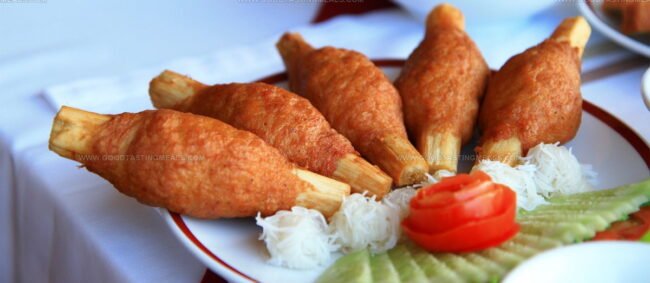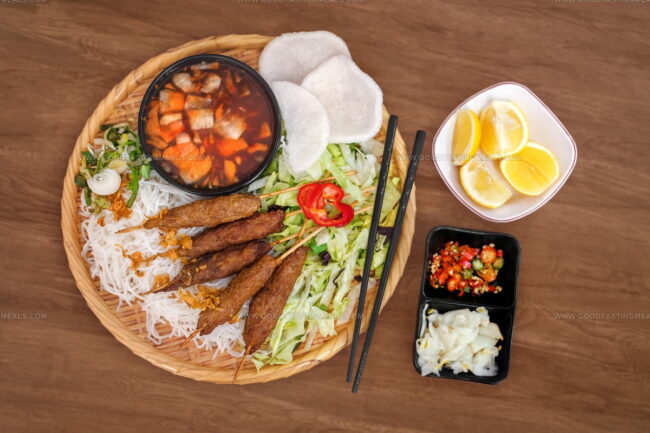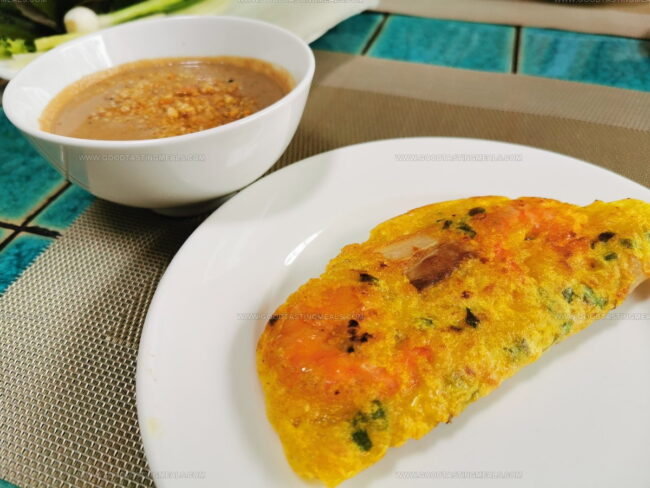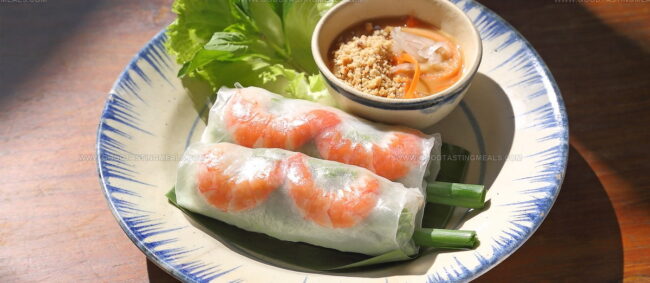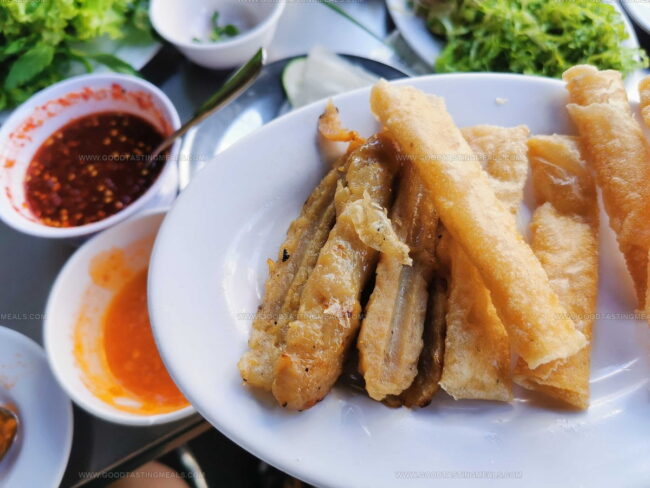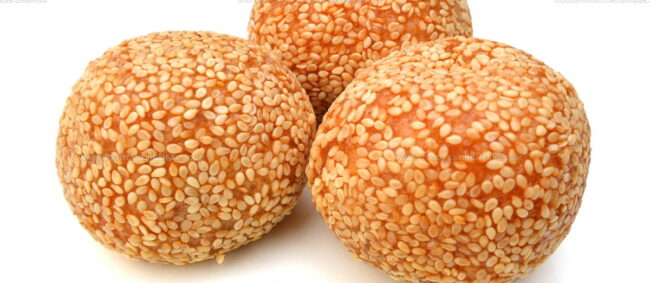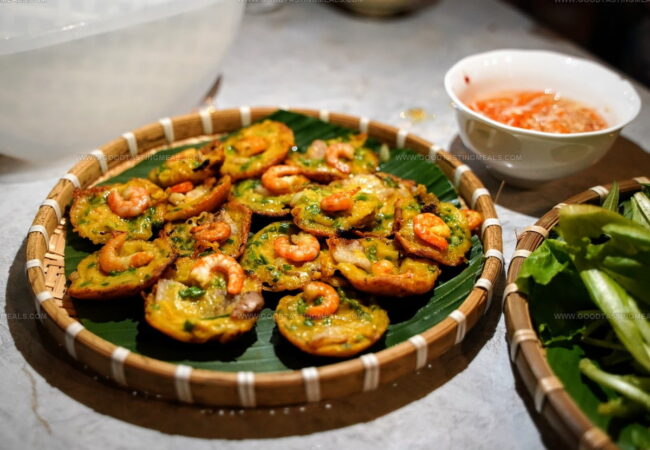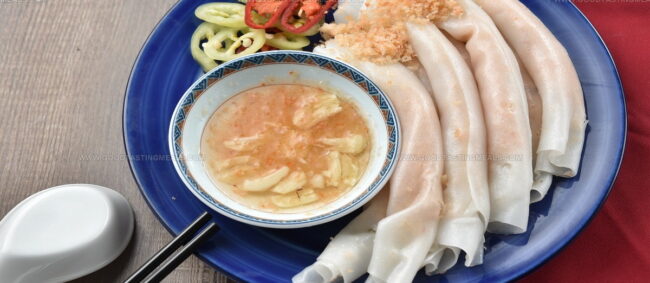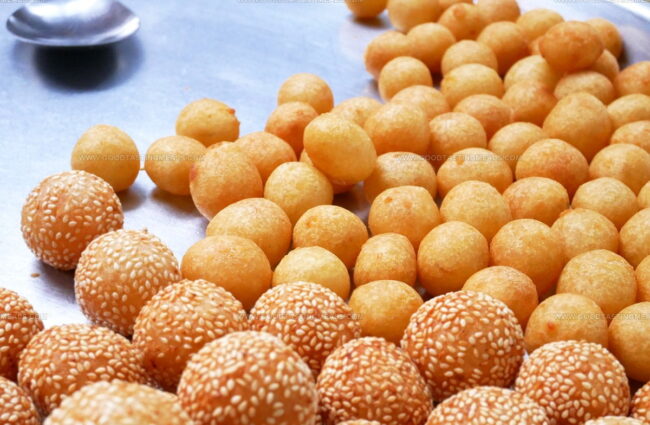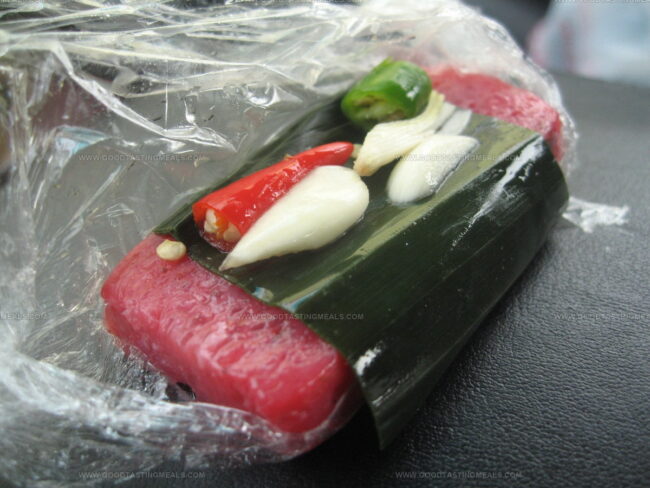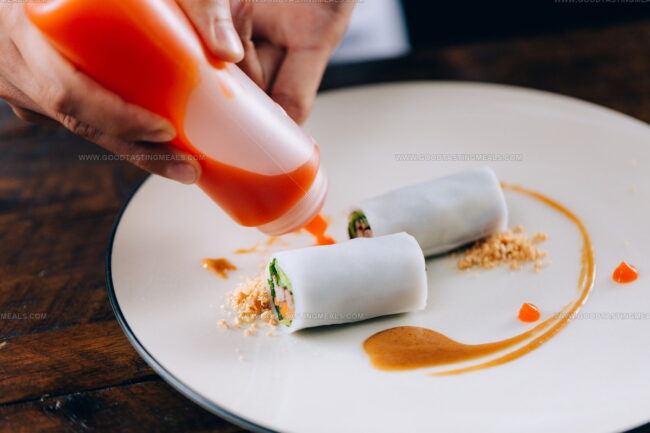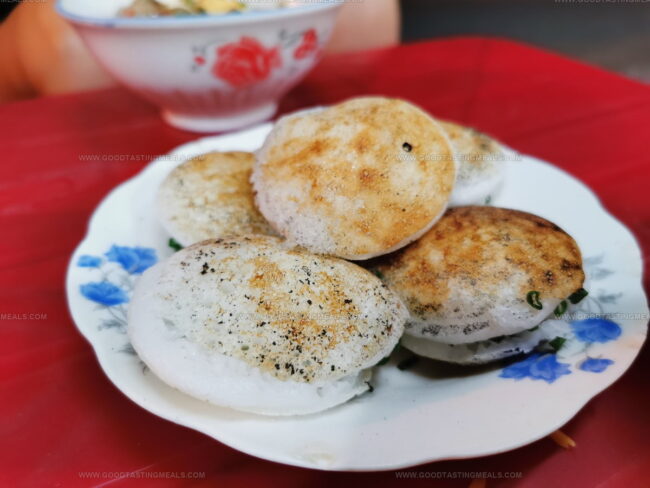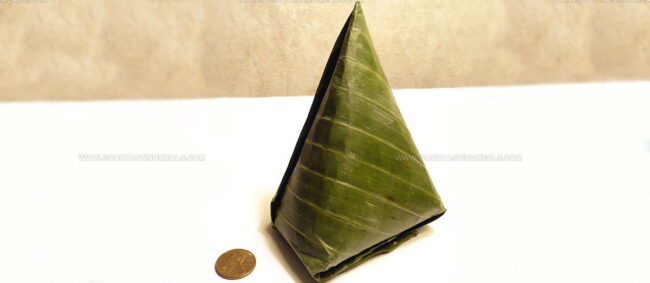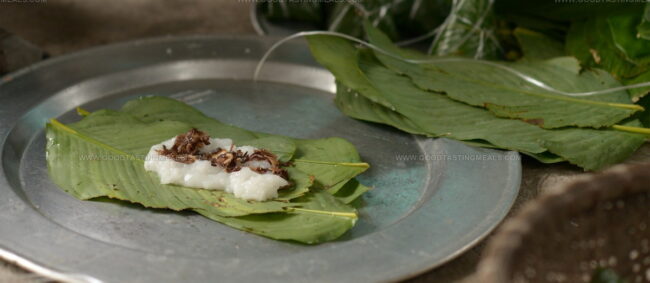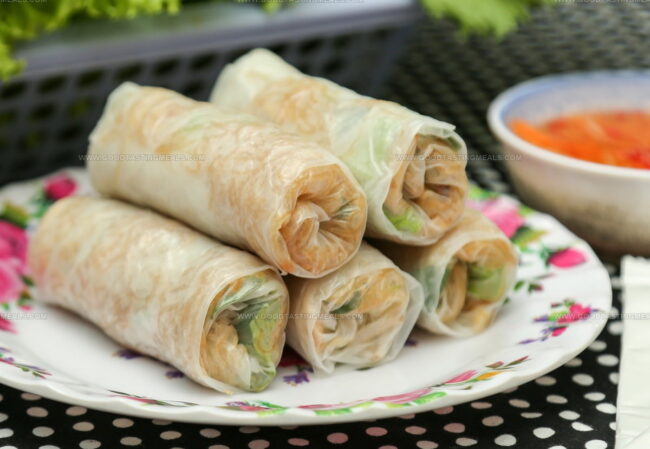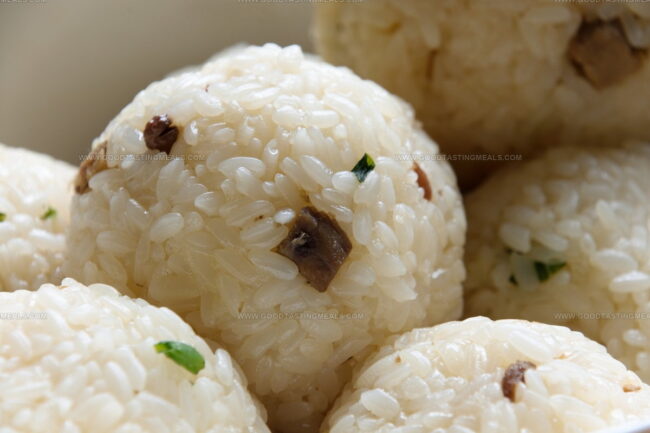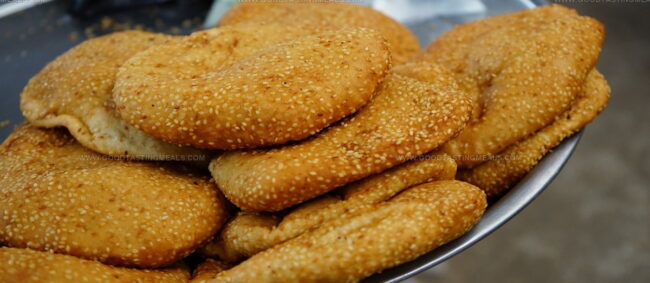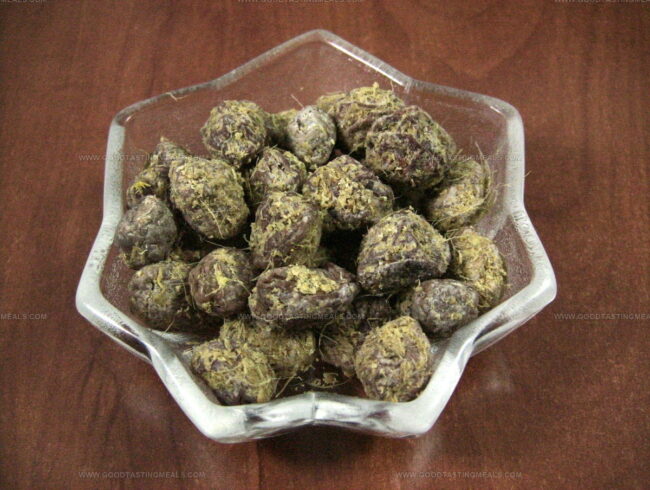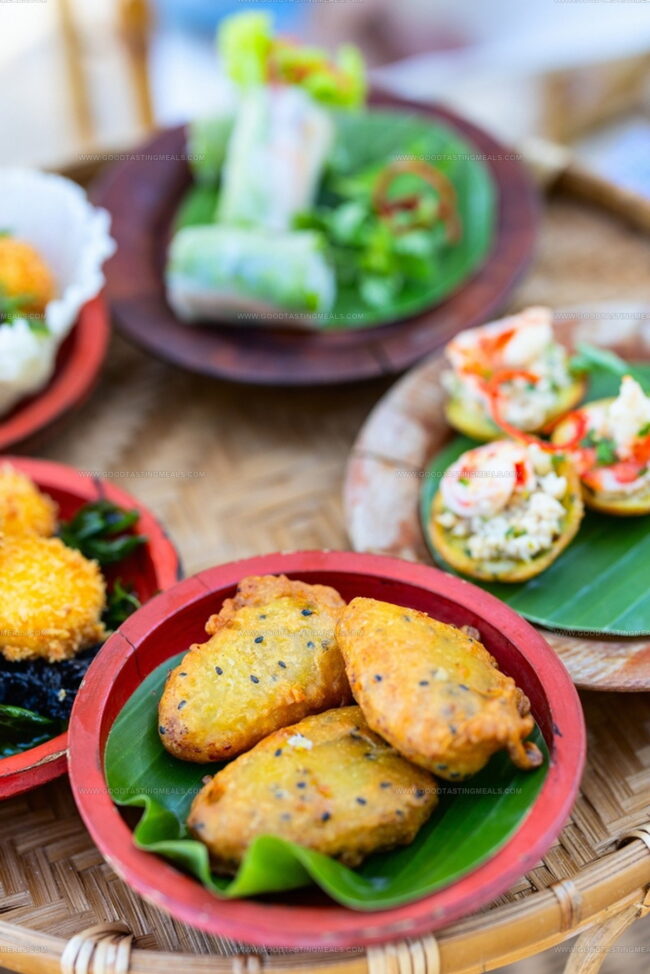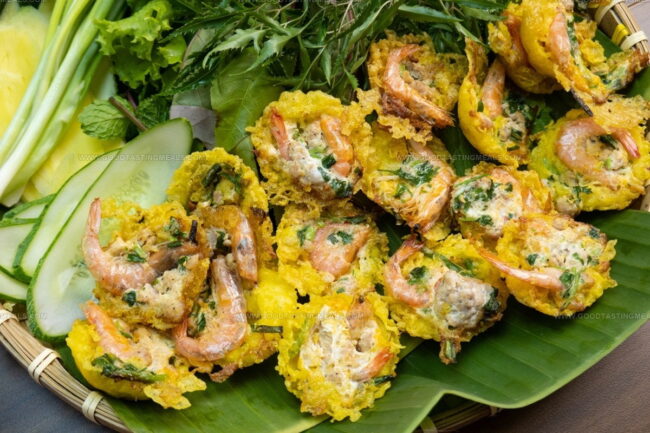26 Classic Vietnamese Snacks to Munch On Anytime
Vietnamese snacks represent a vibrant culinary landscape that tantalizes taste buds with unexpected flavor combinations and cultural richness.
Street vendors and home kitchens across the country craft these delectable bites with remarkable creativity and passion.
Regional ingredients transform simple recipes into extraordinary gastronomic experiences that reflect generations of culinary wisdom.
Each snack tells a story of heritage, blending traditional techniques with innovative approaches that surprise and delight you.
Texture, aroma, and balance play crucial roles in creating these memorable morsels that capture the essence of vietnamese cuisine.
Ingredients often showcase local produce, highlighting the country's agricultural diversity and seasonal bounty.
These compact delicacies offer more than just sustenance - they provide a window into the soul of vietnamese food culture.
Your appetite will definitely be piqued by these 26 signature vietnamese snacks:
Signature Vietnamese Snacks Bursting with Flavor
Vietnamese snacks pack bold flavors in bite-sized form. Street corners and markets brim with options both familiar and surprising.
Vietnamese Fried Spring Rolls (Cha Gio)
Vietnamese spring rolls are crispy golden parcels bursting with savory seafood and meat fillings.
Pork and shrimp create the classic protein base of these traditional rolls wrapped in delicate rice paper.
Vegetables like carrots, cabbage, and mushrooms add extra texture and flavor to the mixture.
Thin glass noodles and bean sprouts provide additional depth to the stuffing.
Skilled cooks carefully roll the ingredients into compact cylinders before quickly frying them.
Short frying creates a perfectly golden exterior with a satisfying crunch.
Served hot with dipping sauce, these rolls offer a delightful snapshot of Vietnamese street food culture.
Sugar Cane Shrimp (Chao Tom)
Chả mía, a beloved Vietnamese street food from Hue, Central Vietnam, combines succulent shrimp paste with sweet sugar cane in a mouthwatering culinary creation.
Seasoned with garlic and sometimes mixed with pork, the shrimp mixture wraps tightly around sugar cane before cooking.
Versatile preparation methods include steaming, grilling, or frying the snack to perfection.
Traditionally served during special events, this appetizer now delights diners across Vietnam.
Locals savor the dish whole or unwrap the shrimp from the cane, bundling it in fresh lettuce leaves.
Nuoc cham sauce provides a tangy complement to the savory protein.
The snack showcases Vietnam's ingenious street food culture with its simple yet sophisticated approach.
Grilled Ground Pork On Lemongrass Skewers (Nem Lui)
Nem lui represents Vietnam's grilling mastery through a unique street food experience blending aromatic lemongrass skewers with seasoned ground pork.
Craftsmen thread spiced meat mixtures of ground pork, black pepper, pork skin, garlic, and shallots around fragrant lemongrass sticks.
Skilled grillers carefully brush the meat with oil and char it over hot coals until perfectly crisp.
Diners wrap the smoky meat in delicate rice paper alongside fresh Vietnamese herbs and vegetables.
Sweet and sour peanut-sesame sauce adds complex flavor dimensions to each bite.
Lemongrass infuses a subtle citrusy essence throughout the dish.
Street vendors and home cooks share this beloved regional specialty as both a satisfying main course and afternoon snack.
Crispy Vietnamese Pancake (Banh Xeo)
Banh xeo are crispy Vietnamese savory pancakes bursting with golden-yellow color and complex flavor profiles from rice flour batter.
Turmeric provides the signature bright yellow hue while creating a thin, crunchy crepe-like texture.
Skilled Vietnamese home cooks prepare these pancakes by combining rice flour, water, and coconut milk into a smooth batter seasoned with spices.
Shrimp, pork, or beef get sauteed with bean sprouts and scallions before being carefully folded inside the pancake.
Diners typically tear off small pieces and wrap them in fresh lettuce leaves and herbs for added freshness.
Restaurants and street vendors serve banh xeo as a popular street food and casual dining option throughout the country.
These pancakes offer a perfect balance of crispy exterior and soft, flavorful interior that makes them a beloved Vietnamese culinary staple.
Vietnamese Summer Rolls (Goi Cuon)
Vietnamese summer rolls merge fresh ingredients wrapped in translucent rice paper, creating a light and refreshing dish celebrated worldwide.
These delicate rolls originated in Vietnam as a cool alternative to traditional fried spring rolls, featuring crisp vegetables, herbs, and protein like shrimp or beef nestled within thin, delicate rice wrappers.
Mint, cilantro, and cucumber provide vibrant flavor and crunch to each bite-sized package.
Vermicelli rice noodles add substance and texture to the rolls' interior.
Nuoc cham, peanut, or hoisin sauce serves as a traditional dipping accompaniment that enhances the rolls' complex taste profile.
Skilled Vietnamese cooks carefully soak rice paper to achieve the perfect transparent and flexible wrapper.
CNN recognized these summer rolls among the world's 50 best foods, highlighting their global culinary significance.
Vietnamese Steamed Buns (Banh Bao)
Banh bao are Vietnamese steamed buns stuffed with savory ingredients that originated from Chinese baozi and became a beloved national comfort food.
Vietnamese cooks transformed the traditional recipe by filling soft, pillowy dough with seasoned ground pork, fragrant mushrooms, and sliced Chinese sausage.
Hard-boiled eggs often nestle inside these round, white parcels that steam to fluffy perfection.
Immigrants likely brought this culinary technique from China during cultural exchanges in the early 20th century.
Customers enjoy banh bao as quick breakfast or satisfying snacks throughout the day.
Families typically serve these buns with hot tea or as a convenient handheld meal.
Vietnamese Grilled Pork Sausage (Nem Nuong)
Nem nuong represents a savory Vietnamese grilled sausage bursting with complex flavors from Nha Trang's culinary traditions.
Ground pork mixed with fat creates its signature texture and taste through careful seasoning of garlic, fish sauce, shallots, sugar, and black pepper.
Baking soda helps puff the meat during preparation, ensuring a light and tender consistency.
Skilled cooks shape the mixture into patties, balls, or skewers before grilling to achieve a perfectly charred exterior.
Versatile serving options include wrapping in rice paper, pairing with rice noodles, or nestling inside a banh mi sandwich.
Vietnamese families frequently enjoy nem nuong alongside steamed rice and fresh vegetables.
Deep-Fried Glutinous Rice Balls (Banh Ran)
Banh ran are crispy Vietnamese glutinous rice flour balls deep-fried to golden perfection with irresistible texture and flavor variations.
Sesame seeds generously coat the exterior, creating a satisfying crunch that contrasts with soft inner fillings.
Sweet versions feature red bean paste enhanced by delicate jasmine flower essence, while savory options come oval-shaped with complex dipping sauces.
Traditional recipes combine glutinous rice flour with precise frying techniques to ensure a perfectly crisp shell.
Skilled makers carefully shape each ball to maintain consistent size and appearance.
Culinary experts recognize these snacks as street food favorites across Vietnam.
Regional differences influence filling ingredients and preparation methods.
Sesame seeds provide a nutty flavor and attractive outer coating that elevates the overall sensory experience.
Vietnamese Mini Savory Pancakes (Banh Khot)
Banh khot are miniature crispy Vietnamese pancakes bursting with golden turmeric-infused flavor and originating from coastal regions.
Skilled cooks prepare these small circular treats using specialized terracotta molds that create perfectly shaped rice flour batter discs.
Crispy edges and soft centers characterize these savory pancakes, which are traditionally topped with succulent seafood like shrimp or squid.
Restaurant vendors typically serve banh khot with fresh herbs, leafy greens, and aromatic fish sauce for dipping.
Seafood provides the primary protein, though some modern interpretations include different meat options.
Outdoor grilling techniques contribute to their unique texture and authentic taste.
Generations of Vietnamese families have enjoyed these compact, flavorful pancakes as a beloved street food and home-cooked delicacy.
Vietnamese Fried Bananas (Chuoi Chien)
Fried bananas epitomize Vietnamese street cuisine's sweet simplicity, transforming humble chuoi xiem bananas into crispy golden treats through strategic frying techniques.
Batter ingredients typically include rice and wheat flour, coconut milk, and sugar, creating a rich coating that enhances the fruit's natural sweetness.
Skilled street vendors flatten banana slices lengthwise before dipping them in the mixture, ensuring maximum flavor absorption.
Cinnamon, shredded coconut, and honey frequently appear as optional flavor enhancers.
Sesame seeds often provide a delicate crunch to the exterior, adding textural complexity.
Warm serving temperatures guarantee maximum enjoyment of these golden-brown snacks.
Coconut sauce frequently accompanies the bananas, complementing their caramelized exterior.
Vietnamese street markets and local restaurants widely feature these irresistible crispy treats as beloved quick refreshments.
Shrimp And Sweet Potato Fritters (Banh Tom)
Banh tom are crispy Vietnamese seafood fritters originating from Hanoi, featuring julienned sweet potatoes woven into delicate nests and crowned with fresh shrimp.
Each morsel gets dipped in light batter and deep-fried to golden perfection, creating a satisfying crunch with contrasting textures.
Street vendors often serve these snacks hot and fresh, accompanied by herbs and dipping sauce.
Hanoi locals traditionally enjoy banh tom as a popular street food and casual appetizer.
Sweet potatoes provide a subtle sweetness that complements the briny shrimp.
Traditional recipes involve carefully cutting sweet potatoes into thin, uniform strips.
Cooking requires precise oil temperature to achieve maximum crispiness.
Vietnamese Crullers (Quay)
Vietnamese quay are crispy, elongated bread sticks deep-fried to golden perfection and connected in the middle, originating from Chinese youtiao.
Dough preparation requires patient resting before carefully joining two pieces and submerging them in hot oil.
Each piece puffs up dramatically during frying, creating a signature light and airy texture.
Students and locals particularly enjoy quay as an affordable comfort food consumed throughout the day.
Restaurants and street stalls frequently serve quay whole or chopped into bite-sized segments.
Versatile accompaniments range from congee to various Vietnamese breakfast dishes.
Steamed Wet Pancakes (Banh Uot)
Banh uot are delicate Vietnamese rice flour pancakes that showcase the elegance of minimalist street cuisine.
Originating in northern Vietnam, these paper-thin sheets transform simple ingredients into a sublime culinary experience.
Skilled artisans steam the translucent pancakes on specialized cloth-covered bamboo frames with remarkable precision.
Rolled into soft cylinders, banh uot come topped with crispy fried shallots and savory cha lua sausage.
Nuoc cham, a zesty fish sauce, provides a tangy complement to the mild pancake base.
Rice flour mixed with tapioca or potato starch creates the signature light texture.
Vietnamese families and street vendors continue to preserve this classic dish through careful preparation and shared meals.
Vietnamese Donuts (Banh Cam)
Banh cam and banh vong are traditional Vietnamese donut-style fritters featuring distinct shapes and textures that delight street food lovers.
Round banh cam distinguishes itself with a sweet mung bean filling encased in glutinous rice flour dough, creating a crispy caramel-glazed exterior that gives way to a soft, dense interior.
Banh vong takes a ring shape resembling a thin donut without the bean filling, sharing the same golden caramelized coating that adds a rich sweetness to its surface.
Vietnamese street vendors often sell these two complementary treats side by side, offering a classic snack that blends textural contrasts and subtle flavors.
Glutinous rice flour provides the signature chewy consistency that sets these fritters apart from western-style donuts.
Street markets and small food stalls across Vietnam continue to prepare these traditional treats using time-honored techniques.
Cured Fermented Beef Or Pork (Nem Chua)
Nem chua are tangy Vietnamese fermented meat rolls bursting with complex flavors from carefully balanced ingredients.
Vietnamese culinary traditions transform lean pork into a zesty snack through strategic fermentation and precise spice blending.
Minced pork mixed with sliced pork skin, chili peppers, and garlic creates the base for these signature rolls.
Banana leaves carefully wrap the meat mixture during a 3-5 day cold fermentation process.
Salt, spice, and natural fermentation develop a unique sweet-sour-spicy profile that distinguishes nem chua from other meat preparations.
Raw garlic and complementary fish or chili sauce enhance the rolls' sharp taste.
Pho Rolls (Pho Cuon)
Pho cuon represents an elegant Vietnamese street food innovation transforming traditional pho ingredients into compact rice paper rolls.
Thin, silky rice noodle sheets wrap around succulent stir-fried beef seasoned with aromatic garlic and ginger.
Fresh herbs like mint, perilla, and cilantro provide a vibrant burst of flavor inside each delicate roll.
Crisp lettuce adds textural contrast to the tender meat and soft noodles.
Restaurants in Hanoi's old quarter first popularized this street snack during the 1940s.
Vietnamese families often prepare pho cuon as a quick, satisfying meal that reimagines classic pho's complex flavors.
Each bite delivers a harmonious blend of savory beef, fragrant herbs, and light noodle wrapping.
Street vendors and home cooks enjoy this simple yet sophisticated dish that originated in northern Vietnam.
Vietnamese Mini Pancakes (Banh Can)
Banh can are crispy Vietnamese pancakes featuring a thin rice flour batter expertly grilled in specialized terracotta molds.
Originating in Ninh Thuan province, these savory treats showcase regional culinary creativity with toppings like whole shrimp, scallions, pork, or quail eggs.
Street vendors prepare them on outdoor grills, carefully pouring batter into unique clay molds.
Each pancake develops a golden, slightly crunchy exterior while maintaining a soft interior.
Diners typically wrap the pancakes in fresh herbs and leafy vegetables before dipping into zesty fish sauce.
Served hot and fresh, banh can provide a quick, satisfying street food experience.
South Central Vietnam especially embraces these flavorful small pancakes as a popular snack or light meal.
Little Cake (Banh It)
Banh it ranks among Vietnam's most beloved glutinous rice delicacies, featuring soft dumplings wrapped in banana leaves with savory fillings that meld complex textures and flavors.
These compact rice parcels typically contain seasoned pork, ground mung beans, or tender shrimp nestled within delicate rice flour dough.
Skilled cooks carefully wrap each dumpling, ensuring the filling remains moist and flavorful inside its protective leaf covering.
Glutinous rice flour provides a smooth, slightly sticky exterior that complements the rich inner ingredients.
Banana leaves impart a subtle earthy aroma during cooking, enhancing the overall sensory experience.
Vietnamese families often prepare banh it during festive celebrations and special gatherings.
Red River Delta Steamed Rice Cake (Banh Te)
Banh te are steamed Vietnamese rice cakes originating from northern Vietnam's Red River Delta, featuring a distinctive cylindrical shape crafted from soft rice flour dough wrapped in fragrant banana leaves.
Savory pork filling studded with wood ear mushrooms and aromatic spices creates a delicious inner layer that distinguishes these traditional parcels.
Skilled Vietnamese home cooks carefully prepare the delicate dough, rolling and sealing each cake with precise techniques passed through generations.
Steaming transforms the raw ingredients into tender, translucent packages with a smooth, slightly chewy texture.
Banana leaf wrappings infuse subtle herbal notes into the rice cake during cooking.
Banh te serve as a popular breakfast or light meal option throughout northern Vietnamese communities.
Shredded Pork Rice Paper Rolls (Bi Cuon)
Bi cuon are delicate Vietnamese rolls packed with shredded pork and crisp vegetables wrapped in translucent rice paper.
Roasted rice powder blends with tender pork skin to create a unique textural filling for these refreshing rolls.
Vermicelli noodles add gentle substance to the mix of ingredients tucked inside the delicate wrapper.
Fresh herbs like mint and cilantro contribute bright, aromatic notes to each bite.
Crisp cucumber and lettuce provide cool, light crunch throughout the roll.
Garlic infuses subtle depth into the protein mixture, enhancing overall flavor complexity.
Vietnamese families traditionally slice these rolls in half before serving them with pungent fish sauce or nutty peanut sauce.
Diners enjoy bi cuon as a light, satisfying appetizer or casual meal that balances multiple textures and flavors.
Vietnamese Rice Balls (Com Nam)
Com nam stands out as a Vietnamese rice delicacy uniquely crafted by hand from long-grain rice into compact logs or balls.
Vietnamese farmers historically developed this practical meal as a portable lunch option for working in rice fields.
Mountain communities in northern Vietnam perfected the technique of kneading rice like dough and compressing it into dense shapes.
Skilled rural workers would shape the rice tightly to ensure it remained intact during transport and eating.
Preparation involves cooking rice, cooling it slightly, and then massaging it into firm, portable portions.
Sesame salt or caramelized minced pork often accompanies these rice logs as a complementary flavor.
Locals typically enjoy com nam as a convenient, protein-packed meal during agricultural work or long journeys.
Fried Shrimp Cake (Banh Cong)
Banh cong reveals Vietnam's ingenious street food artistry through a crispy deep-fried savory cake originating in southern regions like Mekong Delta.
Rice flour forms the base ingredient, creating a light and crunchy exterior that encases a rich mixture of green beans and fresh shrimp.
Specialized metal molds called cai cong shape the cake's unique circular design during frying.
Onions and traditional spices enhance the cake's complex flavor profile.
Small portions make banh cong perfect for afternoon or evening snacking.
Seafood lovers particularly enjoy its balanced combination of textures and tastes.
Street vendors typically prepare these golden-brown treats by carefully pouring batter into hot oil.
Sapa Chestnut Cake (Banh Hat De)
Banh hat de are crispy Vietnamese pastry shells bursting with sweetened ground chestnuts from Sapa's mountainous region.
Street vendors and home cooks expertly craft these golden-brown snacks by carefully filling delicate pastry with locally harvested chestnuts.
Frying transforms the shells into perfectly crunchy treats with a light, caramelized exterior.
Each bite delivers a subtle sweetness balanced by the nutty chestnut flavor.
Sapa residents traditionally prepare these snacks as quick, satisfying street food.
Regional ingredients and simple cooking techniques define this popular Vietnamese treat.
Seasonal chestnuts ensure maximum flavor and freshness in every pastry.
Vietnamese Donuts (Banh Tieu)
Banh tieu are light, airy Vietnamese doughnuts that puff up during deep-frying, creating a crispy exterior and hollow interior.
Wheat flour forms the base of these subtly sweet pastries, which are generously sprinkled with sesame seeds before cooking.
Chinese culinary influences likely inspired their creation, connecting them to similar youtiaocrullers popular in Asian cuisine.
Street vendors across Vietnam sell these golden-brown treats as quick, satisfying snacks that delight locals and travelers.
Sesame seeds add a nutty crunch to their crisp surface, enhancing their simple yet appealing texture.
Restaurants and street stalls frequently serve them warm, straight from the hot oil.
Their distinctive puffy shape comes from carefully controlled frying techniques passed down through generations.
Sugared Or Salted Fruit (O Mai)
O mai represents a cherished Vietnamese preserved fruit snack originating in Hanoi, featuring carefully selected and meticulously prepared fruits like apricot, dracontomelon, peach, and tamarind.
Vendors select uniform, unblemished fruits and clean them thoroughly before pricking the surface to enhance sugar absorption.
Workers carefully cook, ferment, and dry the fruits through a precise process that transforms fresh produce into a sweet-savory preserved treat.
Street vendors along Hang Duong Street sell these popular snacks, which have become a beloved culinary tradition in Vietnam.
Salt and sugar balance creates a unique taste experience that highlights each fruit's natural characteristics.
Generations have enjoyed this traditional preservation method as a nutritious and flavorful snack.
Steamed Wet Cake With Chicken And Innards (Banh Uot Long Ga)
Banh uot long ga embodies Vietnamese street cuisine through its delicate steamed rice cake topped with succulent shredded chicken and rich organ meats.
Originating from Vietnam's culinary landscape, this dish features a thin, translucent rice flour pancake crafted with precision using rice flour and tapioca starch.
Soft wet rice sheets cradle tender boiled chicken and carefully prepared innards, creating a complex flavor profile enhanced by fresh bean sprouts and aromatic herbs.
Fried onions scattered across the surface add crispy texture and depth to each bite.
Traditional serving includes complementary chili flakes and signature dipping sauces that elevate the entire eating experience.
Careful preparation involves briefly frying organ meats to preserve their natural sweetness and fat content.
Typically assembled in a bowl, the dish showcases layers of texture and taste that reflect Vietnam's rich culinary traditions.
Balanced ingredients and intricate preparation make banh uot long ga a beloved street food celebrated for its nuanced flavors.
How Are Vietnamese Snacks Different From Other Southeast Asian Treats?
Vietnamese snacks stand out in Southeast Asia for their unique balance of flavors, textures, and fresh ingredients. Unlike some regional treats that focus heavily on deep-frying or rich sauces, Vietnamese snacks often emphasize:
Do Vietnamese Snacks Vary by Region (North, Central, South)?
Yes, regional differences shape Vietnamese snacks, reflecting local ingredients and culinary traditions:


